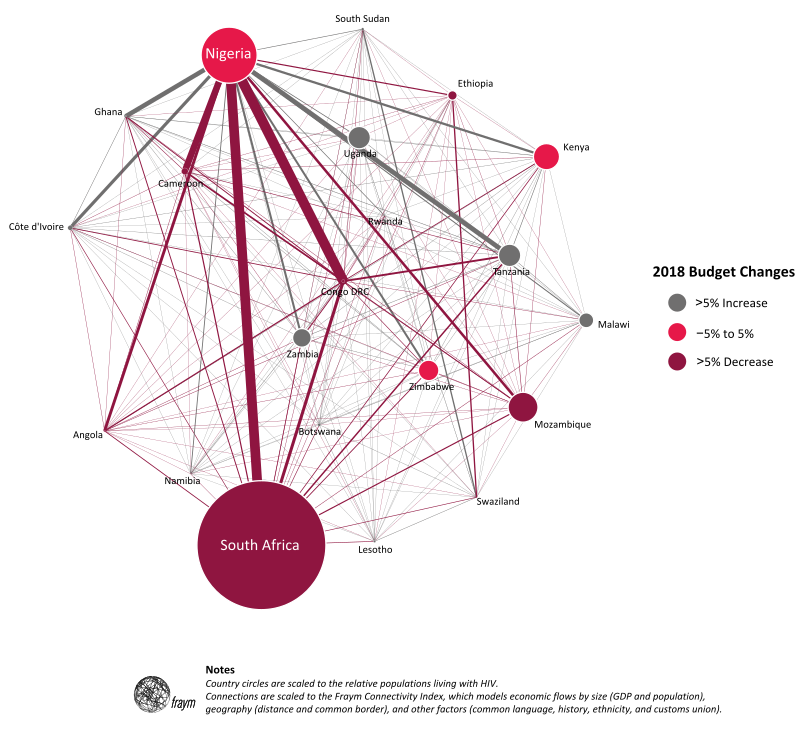Build Effective Social and Behavior Change Strategies


“Diseases don’t respect borders”, says the ONE Campaign in Red Ribbon or White Flag? The Future of the U.S. Global AIDS Response, released this week. Fraym partnered with ONE to look at how investments in combating HIV/AIDS in “high-burden” African countries impact neighboring countries. Knowing that HIV transmission vectors have historically followed economic connections, such as trucking routes and migrant labor, we honed in on how these countries interconnect economically.[1]
To do this, we used the Fraym Connectivity Index which measures how people and goods move across Africa. We use size (GDP and population), geography (distance and common border), and other socioeconomic factors (common language, history, ethnicity, and customs union) to model the intensity of economic linkages within and across national borders. We were able to display below just how significant the economic interaction is between the high-burden countries and their neighbors. This illustrates how a reduction in access to treatment in economic hubs like Johannesburg and Lagos could have negative impacts across the continent.
For more on ONE’s outlook and recommendations, download the report here.
[1] Hunt, C. Journal of Health and Social Behavior (1989). Migrant Labour and Sexually Transmitted Diseases: AIDS in Africa. http://www.jstor.org/stable/2136985?seq=1#page_scan_tab_contents